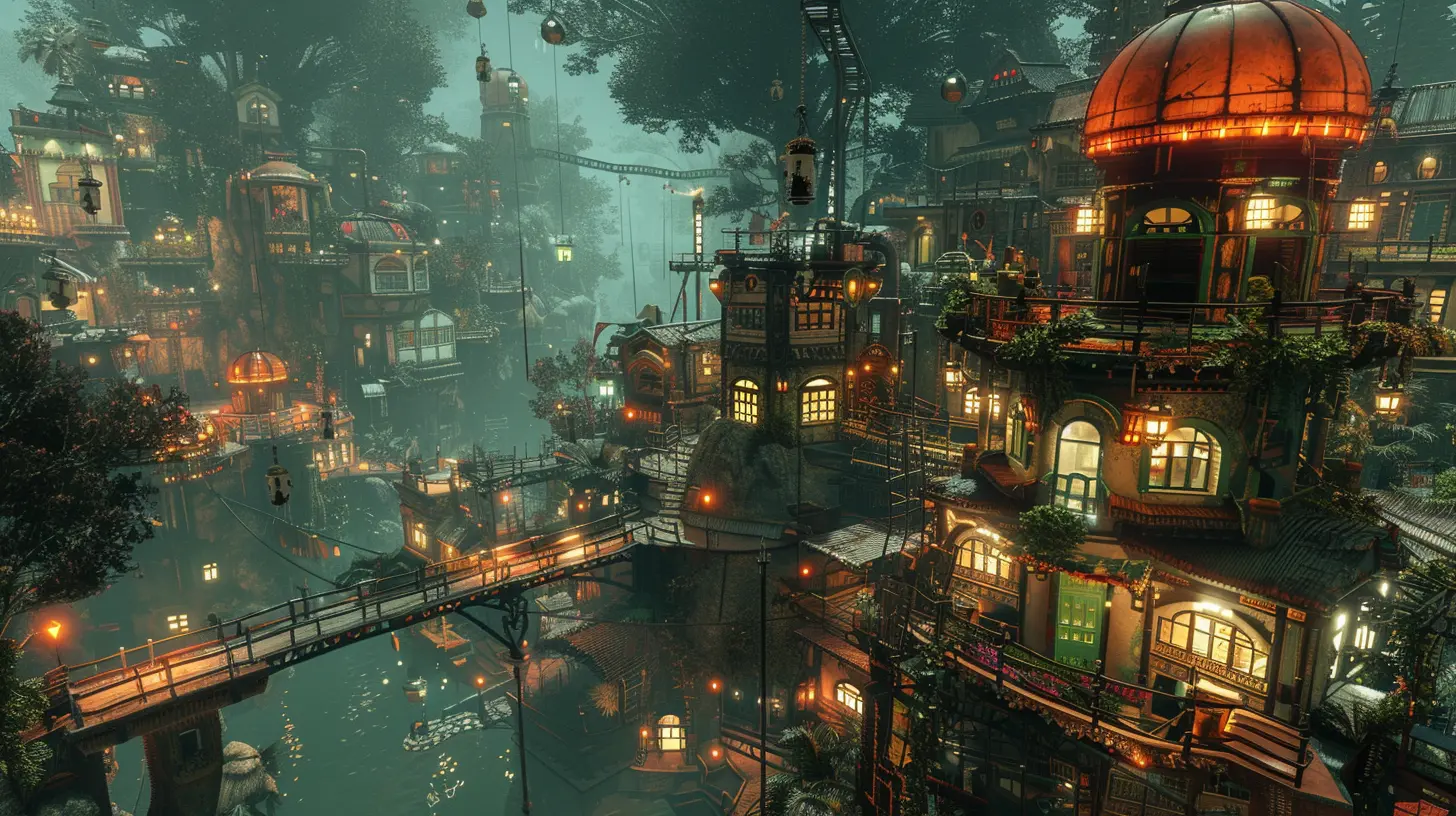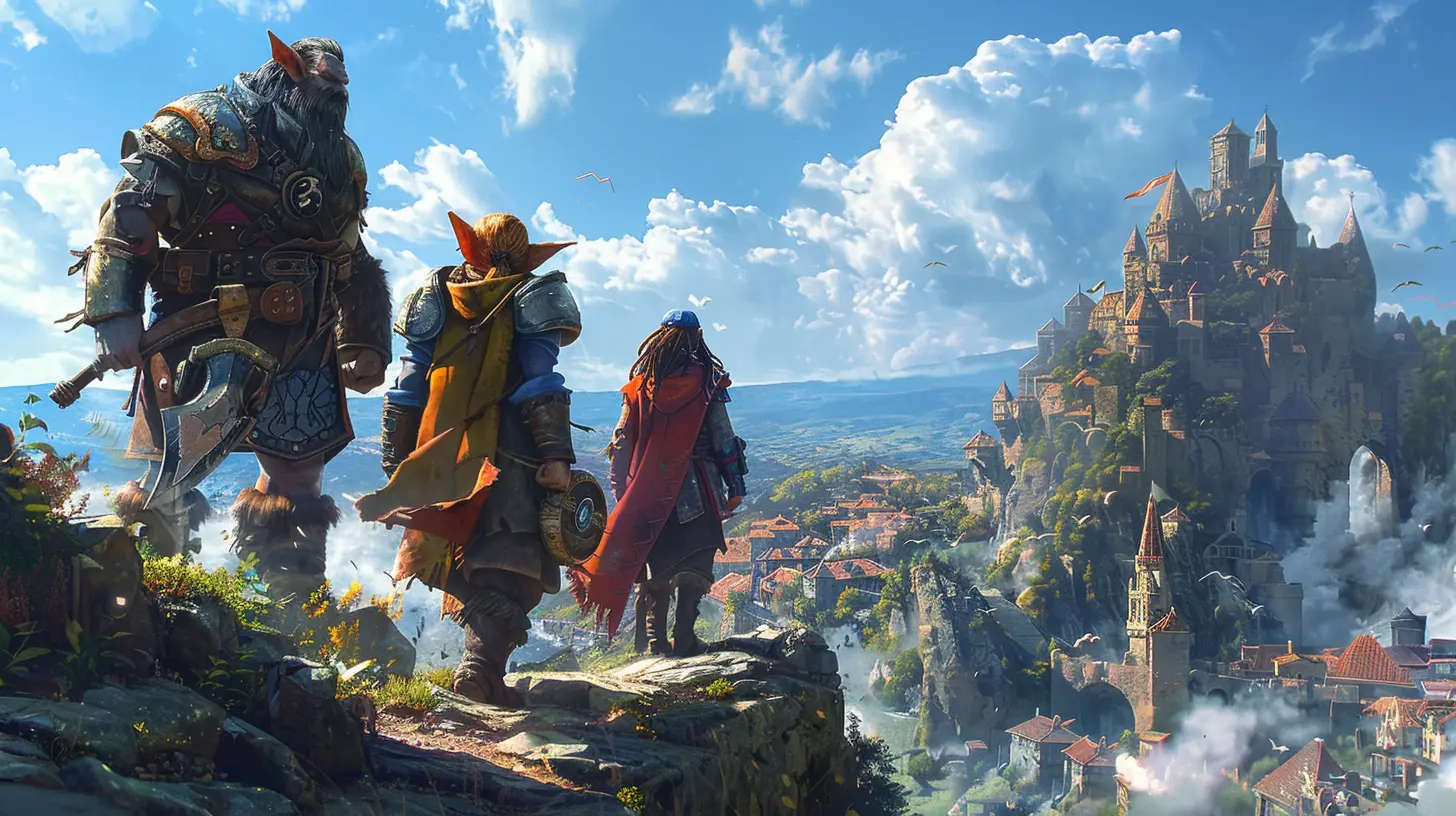Behind the Hotfix: Urgent Changes from the Latest Update
18 August 2025
Let’s be real—there’s nothing quite like booting up your favorite game, only to be met with an unexpected hotfix that flips the meta on its head. Whether it’s nerfing an overpowered weapon or patching up those game-breaking bugs (you know, the ones that turn your screen into modern art), hotfixes are the unsung heroes working behind the scenes to keep our digital playgrounds running smoothly.
So, what really goes down when a hotfix rolls out? And why are some changes made so urgently that devs can’t even wait for the next major patch?
Grab your energy drink, and let’s dive deep into the world of emergency patches, developer panic, and balancing chaos in this breakdown of what’s really happening Behind the Hotfix.
What Is a Hotfix Anyway?
First things first—what even is a hotfix?A hotfix is a small update developers release outside of the normal patch schedule. Usually, it targets one or two critical issues that simply can’t wait. These are the high-priority bugs or balance problems that are messing up the game for a large chunk of players.
Think of hotfixes as the Band-Aids of the gaming world. They're designed to stop the bleeding until a full-blown surgery (aka a major update) can be scheduled.
Why So Urgent?
Let’s say a recent patch introduced a glitch that duplicated items. Suddenly, everyone’s got unlimited in-game currency, and the economy is toast. That’s not something you can wait two weeks to fix—by then, the game’s balance is gone, and players have rolled out the pitchforks.So, when something is game-breaking or is being massively exploited, developers deploy a hotfix to squash it fast.
Behind the Scenes: The Developer Scramble
Ever wonder what it feels like to be a dev when a critical bug slips through the cracks?Imagine launching a big update you’ve worked on for months. You’re celebrating with your team—maybe even cracking open some cold sodas—when suddenly the tweets and Discord messages start rolling in:
> “New patch broke PvP!”
> “Help! My character is stuck in a wall!”
> “This new item is literally INVINCIBLE in ranked!”
Uh-oh.
Code, Coffee, Chaos
The devs jump back online. Meetings are called. Coffee is brewed at double strength. They start combing through logs, trying to replicate the issue in the test environment. Every minute wasted is another moment the community is losing its mind.Once the bug is tracked down, a fix is coded, tested, and deployed—usually all in the same day if it’s bad enough.
It’s high-stress, high-stakes, and high-speed. Developers don’t take these things lightly—behind every hotfix is a group of tired humans trying their best to keep the game afloat.
The Most Common Hotfix Triggers
Some issues are just too spicy to ignore. Here are the usual suspects that spark an emergency update:1. Game-Breaking Exploits
If players find a way to duplicate items, hack stats, or teleport across maps, it’s only a matter of time before things spiral out of control. Hotfixes swoop in to stop the bleeding.2. Crashes and Critical Bugs
Nothing kills the mood faster than your game crashing during a boss fight. If crashes spike after a patch, hotfixes are deployed pronto.3. Overpowered Additions
Sometimes, a new weapon or ability is a bit too powerful. If it’s dominating the meta and ruining balance, a hotfix nerf might be on the way.4. Server Problems
Poor matchmaking, login issues, or lag spikes? Yep, those can trigger a hotfix too—especially if thousands of players are affected.
Case Study: The Great Weapon Nerf of 2024
Let’s talk about a real-world example. Earlier this year, a new assault rifle was added to a popular FPS game. The gun was sleek, fast, and hit like a freight train. Within 24 hours, every lobby was flooded with players using the same weapon. It was everywhere. Snipers? Gone. Shotguns? Useless. The AR was king.The forums exploded. Reddit was chaos. Shotgun mains were crying. It was like watching a digital wildfire spread through the game. The devs, realizing they’d unleashed a monster, issued a hotfix less than 48 hours later.
The fix? Reduced fire rate, smaller clip size, and a longer reload time.
Balance was restored. Peace returned. And the AR? Still good, but not nightmare fuel anymore.
Communication is Key
One of the most underrated aspects of hotfixes is how they’re communicated.Players aren’t psychic. They need to know what changed and why.
Patch Notes Matter
Well-written hotfix notes can turn a potential PR nightmare into a story of transparency and care. On the flip side, vague or missing hotfix notes? That just fuels conspiracy theories and angry tweets.Honesty Wins
Players appreciate honesty. If a dev team says, “Hey, we weren’t expecting this bug—our bad, fix incoming,” most gamers will actually understand. It builds trust, which is huge in live-service environments.Hotfixes vs. Full Updates: What’s the Difference?
Okay, so how do hotfixes stack up against your regular, scheduled updates?| Feature | Hotfix | Full Update |
|--------------------------|-------------------------------|------------------------------|
| Scope | Small and focused | Broad and comprehensive |
| Frequency | As-needed | Scheduled (weekly/monthly) |
| Turnaround Time | Hours to 1–2 days | Weeks or months |
| Purpose | Emergency fixes | New content + balance |
In short: hotfixes are the emergency room—quick, focused, and only brought out when absolutely necessary. Full updates? They’re your annual checkup—scheduled, thorough, and designed to improve quality over time.
The Double-Edged Sword of Fast Fixes
Now, as much as we love devs for patching things quickly, fast fixes aren’t always perfect.Sometimes, a hotfix is rushed and ends up causing more problems. Maybe the new code clashes with something else, or the fix causes a new bug (yes, it happens more than you'd think).
That’s why even the fastest hotfixes still require testing and caution. You don’t want your emergency patch to become another emergency.
Community Reactions: Love it or Lose it
The success of a hotfix isn't just technical—it also depends on how the community takes it.“Finally, they fixed it!”
This is the sweet spot. Players are happy, the fix works, and the game feels fun again.“Why even add it if you were gonna nerf it?”
On the flip side, some players get frustrated when something is introduced only to get nerfed immediately. It can feel like a bait-and-switch.“Couldn’t they test it better?”
Fair point. Players want to feel like new features were tested thoroughly before launch. And while things slip through, better QA could reduce the need for rushed hotfixes.The Human Side of Gaming
One thing we tend to forget? Hotfixes, patches, and balance changes aren’t made by machines. They’re made by real people working under real pressure.Game development is messy. No matter how much planning goes into a patch, surprises always pop up once millions of players start poking around.
That’s why it’s always good to cut devs some slack. They're often just trying to put out fires with limited tools and tight deadlines. Nobody wants to ship a buggy update—it just happens sometimes.
Hotfixing the Future
So, what does the future hold for hotfix strategies?Smarter Monitoring Tools
More and more devs are using real-time analytics to detect strange behavior. If something's off—like a weapon with a way-too-high kill rate—alerts go out automatically. That speeds up response time.Community Test Servers
Some games let the community test patches before they go live. This crowdsourced beta testing catches a lot of bugs early, reducing the need for hotfixes later.Transparent Roadmaps
When devs share their patch plans and update timelines, everyone wins. Players know what’s coming, and unexpected hotfixes become easier to understand in context.Final Thoughts: Don’t Panic, Hotfix On
Hotfixes might sound dramatic—and sometimes they are—but they’re also essential. They help keep your favorite games fair, fun, and functional. Without them, the smallest bugs could turn into big problems faster than a speed-runner skipping cutscenes.Next time you see a surprise update land during your game session, take a moment. Behind that hotfix is a whole team of people working overtime to make sure your in-game experience stays smooth.
So yeah, hotfixes? They’re not glamorous. But they’re absolutely vital.
And who knows—behind every hotfix might be a story just as wild as the game itself.
all images in this post were generated using AI tools
Category:
Updates And PatchesAuthor:

Avril McDowney
Discussion
rate this article
1 comments
Simon Diaz
Great insights on the latest hotfix! It’s refreshing to see developers respond quickly to player feedback. Let’s hope these changes enhance gameplay as intended. Looking forward to seeing how it all unfolds!
September 2, 2025 at 2:46 AM

Avril McDowney
Thank you! We're excited to see how these changes impact gameplay and appreciate your support!


